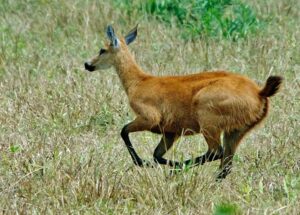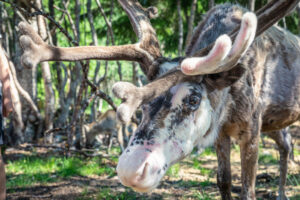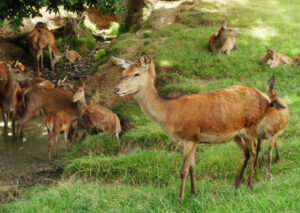The Majestic World of Reindeer: Understanding the Lives and Habits of These Arctic Wonders
The Arctic region is home to a myriad of fascinating creatures, each adapted to survive in one of the harshest environments on Earth. Among these remarkable inhabitants, reindeer stand out as true icons of the North. These majestic creatures, also known as caribou in North America, have captured the imaginations of people worldwide with their resilience, unique characteristics, and vital role in the Arctic ecosystem.
Natural Habitat and Distribution:
Reindeer are primarily found in the Arctic tundra and subarctic regions, spanning across North America, Europe, and Asia. Their vast distribution reflects their adaptability to extreme climates, from the freezing temperatures of the Arctic Circle to the more temperate subarctic regions. These nomadic creatures often migrate great distances in search of food, traversing both flat tundra landscapes and rugged mountainous terrain.
Physical Characteristics:
Reindeer are well-suited to their challenging environment with a set of distinctive features. Their dense, insulating fur changes color with the seasons, providing them with effective camouflage. Both males and females grow antlers, but the males’ antlers are larger and more elaborately branched. These antlers are a symbol of strength and play a crucial role in mating rituals and establishing dominance within the herd.
Social Structure and Behavior:
Reindeer are highly social animals, typically forming herds that range in size from a few individuals to several thousand. The social structure within a herd is organized around a dominant male, or bull, who leads and protects the group. During the breeding season, males engage in impressive displays of dominance to establish their mating rights.
Migration Patterns:
One of the most remarkable aspects of reindeer behavior is their seasonal migration. Driven by the need for food, these Arctic wonders cover vast distances, sometimes traveling up to 3,000 miles in a year. Migration not only helps them access new grazing areas but also allows them to evade predators and find relief from biting insects in different locations.
Importance to Indigenous Cultures:
Reindeer hold immense cultural significance for indigenous peoples in the Arctic, such as the Sami in Scandinavia and the Nenets in Russia. These communities have coexisted with reindeer for centuries, relying on them for sustenance, transportation, and materials for clothing and shelter. Reindeer herding remains a vital aspect of their traditional way of life.
Conservation Challenges:
Despite their resilience, reindeer face various challenges, including climate change, habitat loss, and increased human activity in the Arctic. Changing weather patterns can affect the availability of food and disrupt migration routes, posing a threat to their survival. Conservation efforts are crucial to ensuring the continued well-being of these magnificent creatures and preserving the delicate balance of the Arctic ecosystem.
The world of reindeer is a captivating tapestry woven with tales of survival, migration, and cultural significance. These Arctic wonders symbolize the interconnectedness of wildlife and the environment, highlighting the importance of conservation to preserve their majestic world for generations to come. As stewards of the planet, it is our responsibility to appreciate and protect the incredible lives and habits of these iconic reindeer that roam the vast, frozen landscapes of the North.




